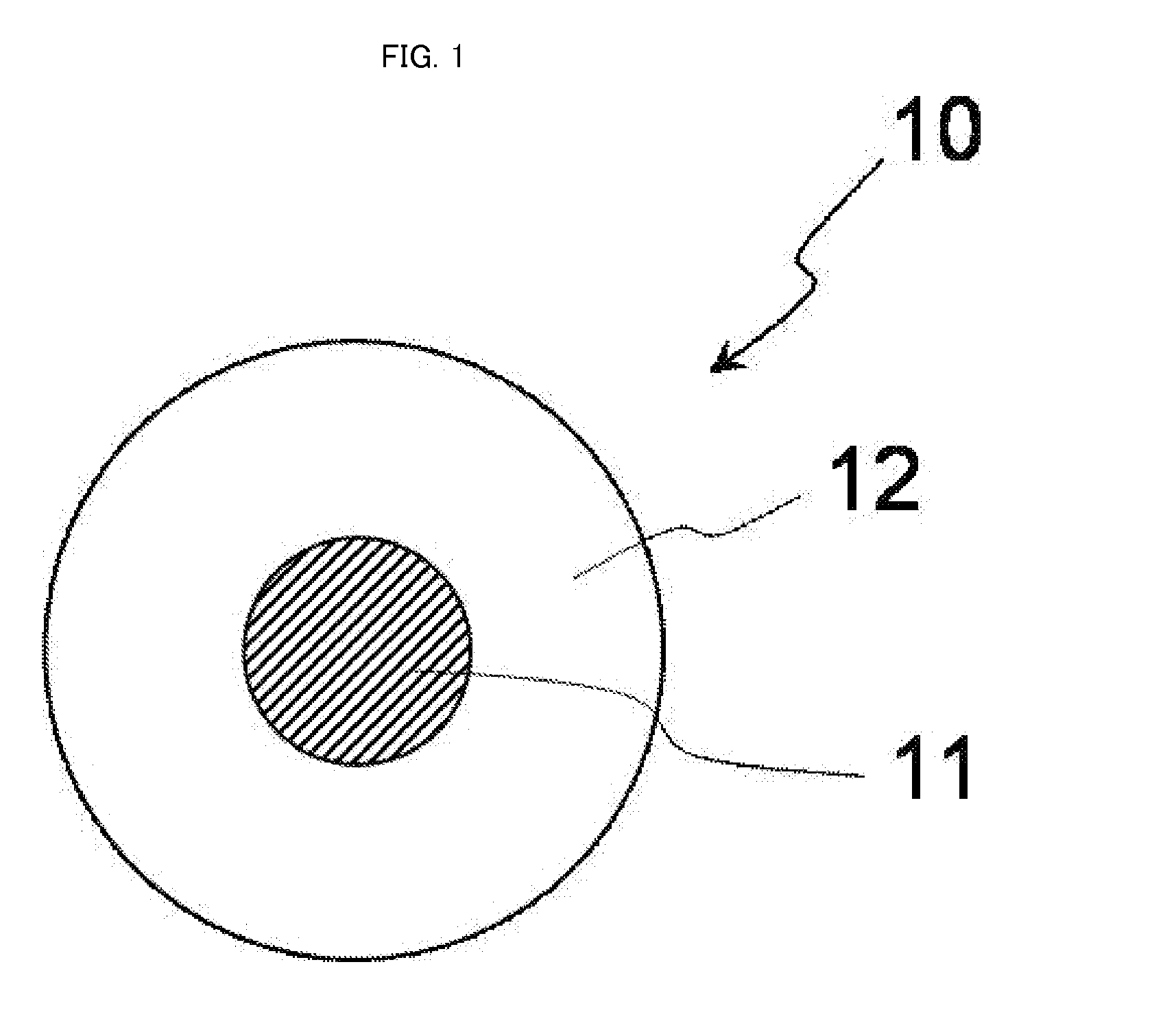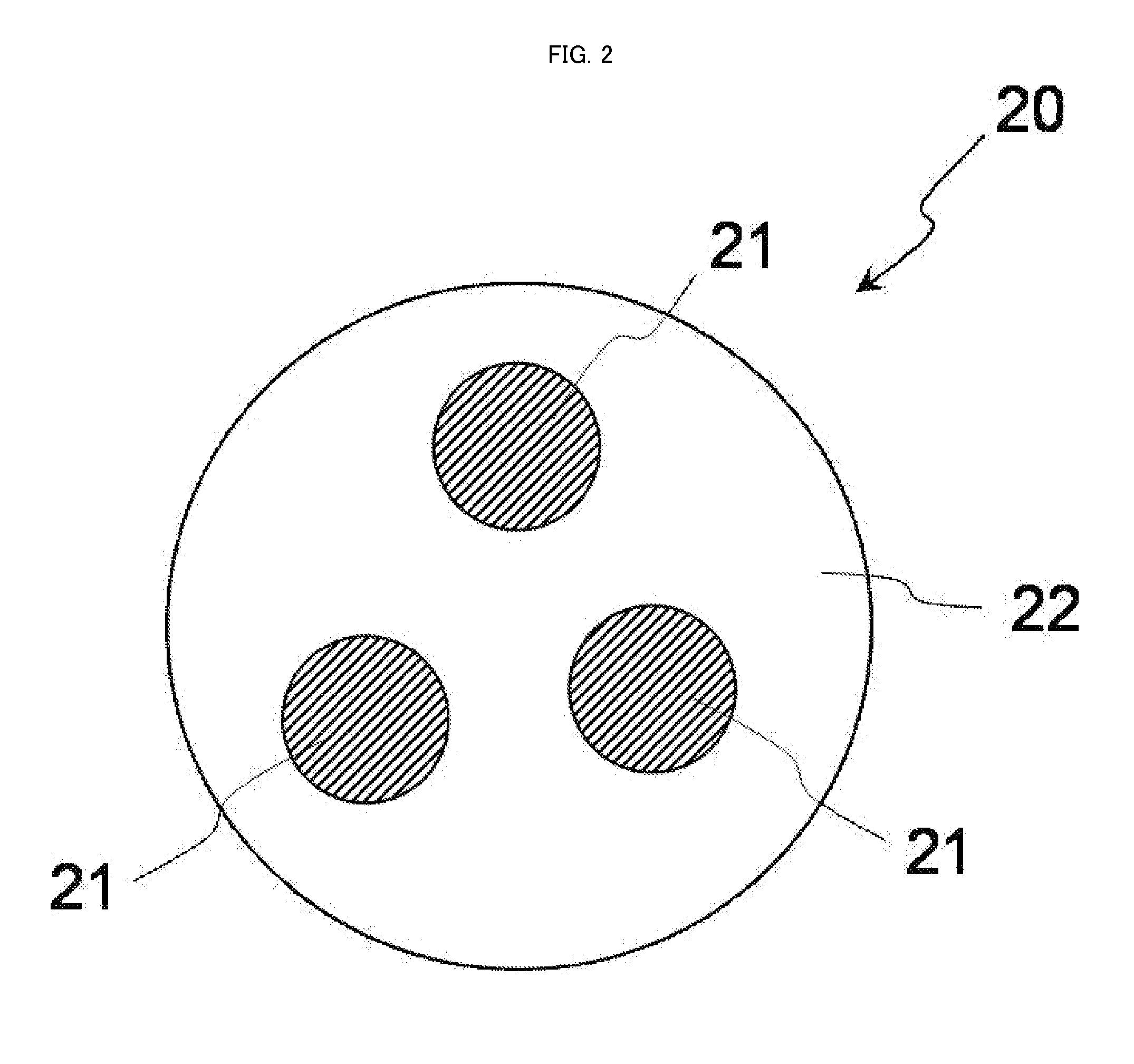Method of manufacturing nanoparticle dispersion liquid
a technology of nanoparticles and liquids, which is applied in the directions of transportation and packaging, mixing, coatings, etc., can solve the problems of difficult dispersibility of nanoparticles in liquids
- Summary
- Abstract
- Description
- Claims
- Application Information
AI Technical Summary
Benefits of technology
Problems solved by technology
Method used
Image
Examples
first embodiment
(First Embodiment of Complex)
[0078]FIG. 1 is a schematic cross-sectional view conceptually illustrating a cross-section of a complex particle having a core-shell structure, which is a first embodiment of the complex in the present invention.
[0079]As illustrated in FIG. 1, a complex particle 10 has a structure in which a nanoparticle 11 as a core is covered with a solid material 12 as a shell.
[0080]In FIG. 1, the complex particle 10 and the nanoparticle 11 are true-spherical. However, the complex particle and the nanoparticle in the present invention may be particles each having a shape other than the true spherical shape (e.g. formless particles).
second embodiment
(Second Embodiment of Complex)
[0081]FIG. 2 is a schematic cross-sectional view conceptually illustrating a cross-section of a complex particle that is a second embodiment of the complex in the present invention.
[0082]As illustrated in FIG. 2, a complex particle 20 has a structure in which plural nanoparticles 21 are present in a solid material 22 as a matrix.
[0083]In FIG. 2, the complex particle 20 and the nanoparticle 21 are true-spherical. However, the complex particle and the nanoparticle in the present invention may be particles each having a shape other than the true spherical shape (e.g. formless particles). Additionally, in FIG. 2, three nanoparticles 21 are included in the complex particle 20, but the number of nanoparticles included in a single complex particle is not particularly limited.
[0084]A specific example of the complex particle 20 is an LnOX-LnX3 complex particle in which the nanoparticles 21 are LnOX (Ln represents a rare earth element and X represents a halogen e...
experimental example 1
Production of Complex Particle
[0152]Using a method described in paragraphs 0054 to 0059 in JP-A No. 2009-138081, an Er:LaOCl-Er:LaCl3 complex particle was produced that had a structure in which Er:LaOCl nanoparticles were present in a matrix made of Er:LaCl3.
[0153]Details of the production will be given below.
[0154]First, LaCl3.6H2O was dissolved in water to prepare a LaCl3 aqueous solution (LaCl3 concentration: 1.345 mol / L).
[0155]Next, ErCl3.6H2O was dissolved in water to prepare an ErCl3 aqueous solution (ErCl3 concentration: 0.873 mol / L).
[0156]The LaCl3 aqueous solution and the ErCl3 aqueous solution obtained above were weighed out in amounts to provide a mole ratio of LaCl3 / ErCl3 of 99 / 1 and mixed together to obtain a mixture solution.
[0157]The obtained mixture solution was heated at 80° C. for three hours to obtain a particulate hydrate (La0.99Er0.01Cl3.6H2O).
[0158]The obtained hydrate was placed in a refractory boat made of alumina and heated in an electric furnace with a nitr...
PUM
| Property | Measurement | Unit |
|---|---|---|
| Temperature | aaaaa | aaaaa |
| Viscosity | aaaaa | aaaaa |
| Viscosity | aaaaa | aaaaa |
Abstract
Description
Claims
Application Information
 Login to View More
Login to View More - R&D
- Intellectual Property
- Life Sciences
- Materials
- Tech Scout
- Unparalleled Data Quality
- Higher Quality Content
- 60% Fewer Hallucinations
Browse by: Latest US Patents, China's latest patents, Technical Efficacy Thesaurus, Application Domain, Technology Topic, Popular Technical Reports.
© 2025 PatSnap. All rights reserved.Legal|Privacy policy|Modern Slavery Act Transparency Statement|Sitemap|About US| Contact US: help@patsnap.com



